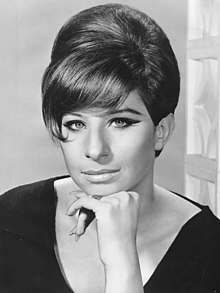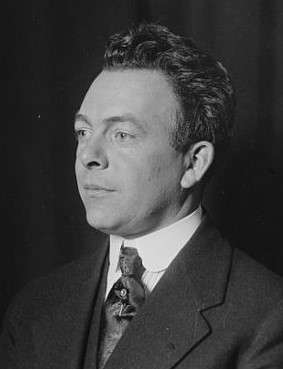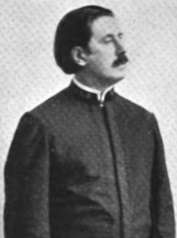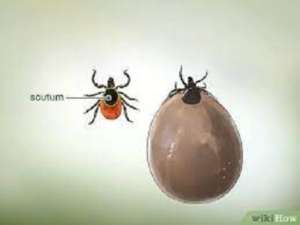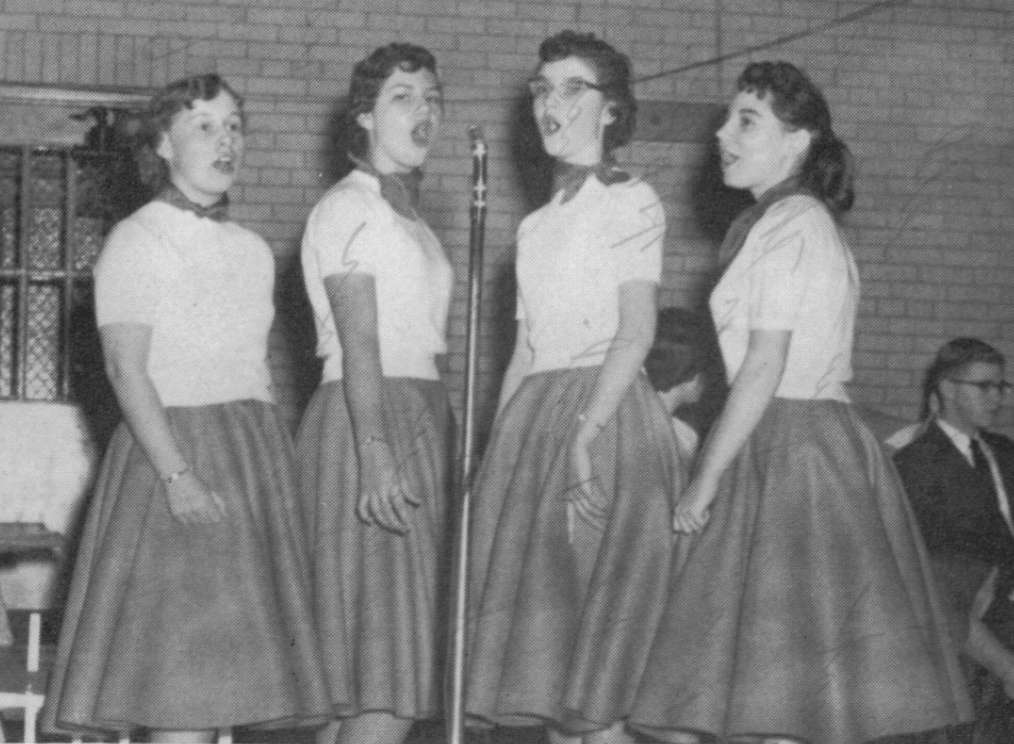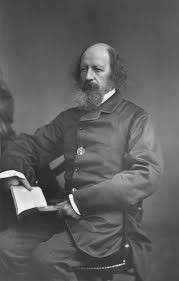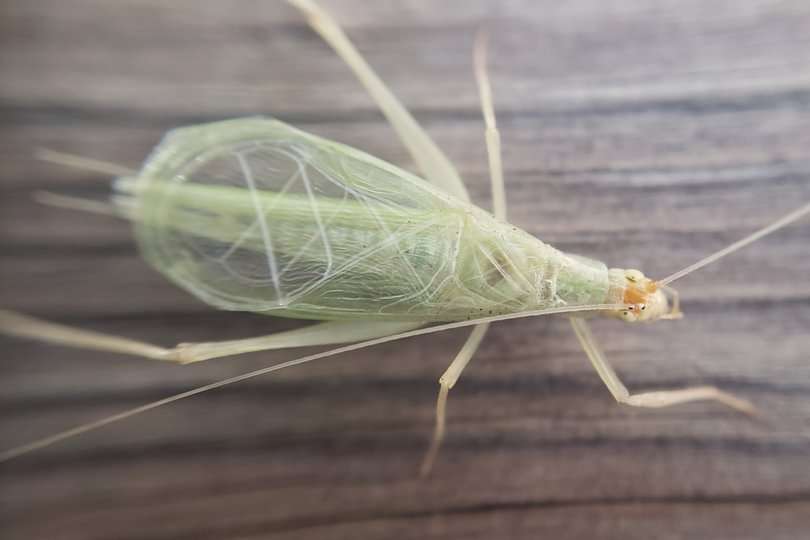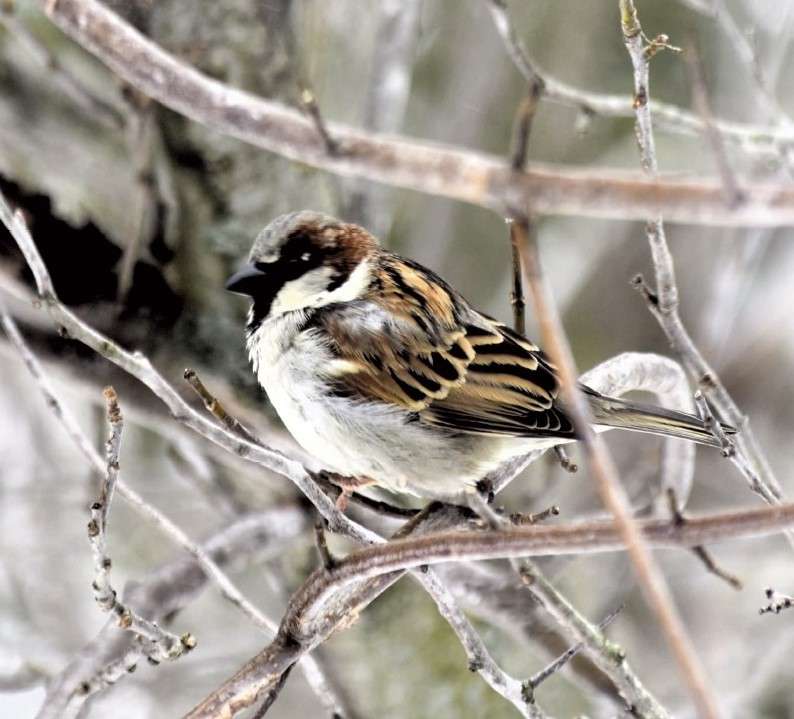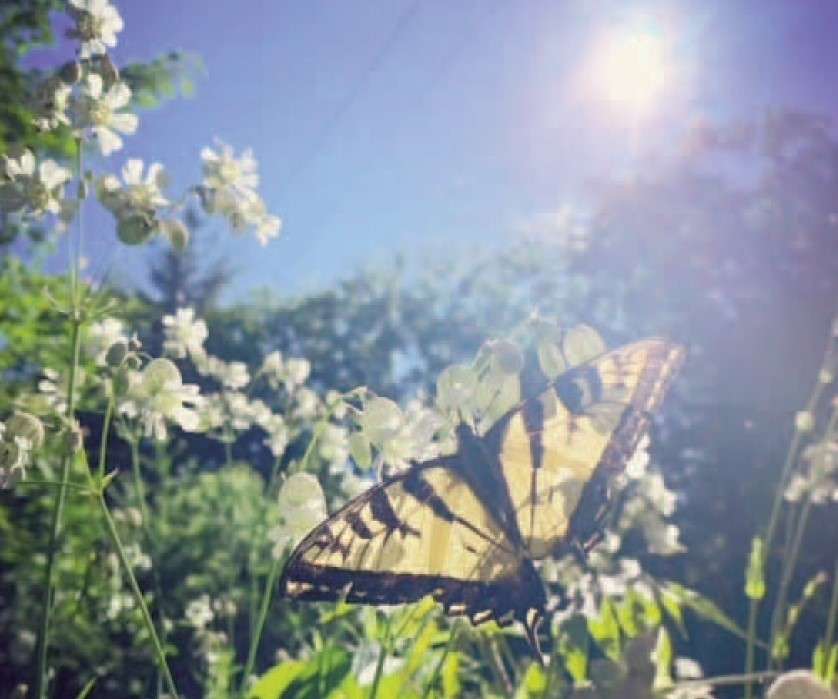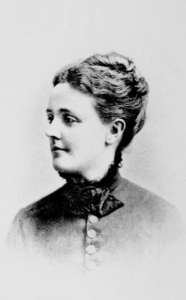REVIEW POTPOURRI: Streisand’s “Highlights”; Tenor: Charles Harrison; & Creatore’s Band
/0 Comments/in Review Potpourri/by Peter Cates by Peter Cates
by Peter Cates
Highlights
Highlights (Columbia CT 52849) is a 1992 cassette of 24 selections from the massive 1991 four CD set, Just for the Record, of almost 40 years of Barbra Streisand’s singing with a few vocals from composers Harold Arlen, Richard Rodgers, and Michel Legrand, and singers Judy Garland, Neil Diamond and Ray Charles.
Streisand has consistently given magnificent performances of so many Great American Songbook classics and contemporary selections.
Here is You’ll Never Know via both a 1955 recording when she was 13 at the beginning of side 1 and a duet from 1987 at the end of side 2 with herself in 1955. Other classics include Cry Me a River, Get Happy, Happy Days are Here Again, People, Nobody Knows You When You’re Down and Out, Come Rain and Come Shine, etc.
It is a very good musical textbook for young voice students on what to choose for material and how to develop their technique.
Charles Harrison
Tenor Charles Harrison (1878-1965) recorded many shellacs for various labels including Columbia, Edison, Victor, Vocalion, etc., and did many of the classic pop standards of the day – I’m Always Chasing Rainbows, Peggy O’ My Heart, Avalon as well as sacred and opera selections.
A 12-inch acoustic shellac record (Columbia A5348), from November 4, 1911, featured him performing an aria Lend Me Your Aid, from Charles Gounod’s opera The Queen of Sheba.
Harrison didn’t have what one might call a beautiful voice, like Caruso, Mario Lanza and Luciano Pavarotti, etc., but he did sing with intelligence, conviction and a naturalness of phrasing that was very enjoyable.
Charles Gounod (1818-1893) wrote one masterpiece, Faust, among his dozen operas, the others being for me uneven in quality but having some charming arias.
The Queen of Sheba (La Reine de Saba) was premiered in a magnificently opulent production at the Paris Opera in 1862 but rarely performed since then; the first recording of the complete opera was a live Italian production in 2001 while the U.S. premiere occurred in 2018 via a concert presentation in Boston by Odyssey Opera.
Creatore’s Band
Columbia A5364 is another 12 inch shellac with Creatore’s Band giving very expressive performances of Handel’s Hallelujah Chorus from the Messiah and the hymn Nearer My God to Thee. The two sides were recorded in 1908, originally released as one-sided discs and, around 1918, as the two-sided record.
The leader Giuseppe Creatore (1871-1952) organized the Band in the early 1900s after moving to the United States from Italy. Due to his musical gifts and flamboyant personality, he and the Band experienced incredible success and got $5,000 for each concert.
A son Luigi Creatore (1921-2015) partnered with Hugo Peretti as Hugo and Luigi and they did numerous arrangements during the ‘50s and ‘60s for pop artists, including Peter Nero and Perry Como, at Roulette and RCA Victor.
All of the above recordings can be heard on the Internet.
SCORES & OUTDOORS: Renewed deer tick alert
/0 Comments/in Scores & Outdoors/by Roland D. Hallee by Roland D. Hallee
by Roland D. Hallee
There is nothing like beating a subject to death. But, in this case, it’s worth every word.
You have to be living in a cave not to know that deer ticks are at an all time high. They are everywhere. Friends and family have told me stories about their encounters with the insect, and they all have one thing in common. They have all had multiple numbers on them at one time.
Also, as you know, deer ticks are hazardous to your health, primarily because they are the carriers of the dreaded Lyme Disease. In the last decade alone, the population of ticks of all kinds has ballooned in the United States. The number of ticks that carry Lyme disease has been on the rise in the mid-Atlantic states, and has skyrocketed throughout the Northeast. It has gained a reputation as a serious health problem in many areas.
On top of that, with most of us trying to get outdoors this time of year (opening camps is a real concern), and with the recent mild winter we experienced, the deer ticks are already active and will be out in force this summer.
Only adult female ticks and nymphs can transmit infections through their bite. Male ticks attach, but they don’t feed or become engorged. Adult females have red and brown bodies and are larger than males. Nymphs are actively feeding between early April and early August.
Although not all deer ticks are infected with Lyme disease, you never really know. Only ticks that have fed on infected mammals are diseased. About half of deer ticks are infected (usually white-footed mice can be other culprits).
Deer ticks live two to three years, and in that time usually enjoy three blood meals. In the spring and summer of its second year, a nymph will take its second meal. They insert their mouth parts into the skin much like a corkscrew, which ensures them a nice tight grasp. They often take up to five days to complete their meal.
This fact is key to reducing panic when discovering a tick. An infected tick must be attached to its host for at least 24 hours, and up to 48 hours to transmit the disease. It’s the very reason for checking your body right away after any possible exposure to a tick-infested environment.
Deer ticks crawl. They usually grab onto people or animals that brush up against plants near ground level, and then they crawl upwards to find a quiet place for their blood meal – the inner thigh and in the hair line behind the neck are a couple of “favorite” spots. Although many sources will state that ticks don’t land on you from an overhanging tree branch, many people have insisted it has happened to them.
Ticks live in wooded, brushy areas that provide food and cover for mice, deer and other mammals. The ideal tick environment is humid. Your exposure will be greatest along trails in the woods and fringe areas between woods and the border, where they will wait patiently on the tips of vegetation for an unsuspecting host to walk by.
Life is too short to avoid the outdoors during our short spring, summer and fall. In Maine, that is about half the year. There is no need to be brave, just be smart: cover your body; wear repellant; check yourself for ticks, if you find a tick, remove it immediately; shower soon after being outdoors; throw clothing in the dryer, that will kill any ticks present; and finally, if you are concerned, don’t hesitate to contact your doctor.
The best way to remove a tick is to use fine-point tweezers and grab the tick as close to the skin surface as possible. Pull backwards gently but firmly, using an even, steady pressure. Do your best not to jerk or twist. Don’t squeeze, crush or puncture the tick’s body, the fluids inside may contain infection-causing organisms. After removing the tick, wash the skin and your hands thoroughly with hot soap and water. If any mouth part of the tick remain in the skin, leave them alone. They will be expelled on their own. It could take weeks. Trying to remove them will only cause you unnecessary pain.
For the deer tick, Ixodes scapularis, deer are the preferred host, but they can also be found in small rodents. After the female is engorged, the tick drops off and overwinters in the leaf litter of the forest floor. The following spring, she will lay several hundred to a few thousand eggs in clusters. They are very hardy creatures. They will be active even after a moderate to severe frost, as daytime temperatures can warm them enough to keep them actively searching for a host. In the spring, they are one of the first invertebrates to become active.
It may be monotonous to keep hearing about the health hazards of being infected by a deer tick, but it’s one that needs to be repeated.
Roland’s trivia question of the week:
The 1927 New York Yankees batting order, including Babe Ruth and Lou Gehrig, was known by what nickname?
FOR YOUR HEALTH: Everyday Mental Health Tips
/0 Comments/in For Your Health/by Website Editor When we talk about mental health we are talking about “a person’s condition with regard to their psychological and emotional well-being.” Our mental health influences how we think, feel, and behave in daily life. It also affects our ability to handle stress, face and overcome challenges, maintain and build relationships, and recover from difficulties and setbacks.
When we talk about mental health we are talking about “a person’s condition with regard to their psychological and emotional well-being.” Our mental health influences how we think, feel, and behave in daily life. It also affects our ability to handle stress, face and overcome challenges, maintain and build relationships, and recover from difficulties and setbacks.
Being mentally or emotionally healthy means more than being free of depression, anxiety, or other psychiatric illnesses. “Mentally healthy” people often:
- Enjoy life and have the ability to laugh and have fun.
- Are able to deal with stress and bounce back from adversity.
- Feel a sense of meaning and purpose, in both their activities and their relationships.
- Are flexible and adaptable to change.
- Are able to build and maintain fulfilling relationships.
We all experience disappointment, loss, and change. And while a normal part of life, these emotions and experiences still cause sadness, anxiety, and stress. But just as physically
healthy people are better able to bounce back from illness or injury; people with strong mental health are better able to bounce back from adversity, trauma, and stress. This skill is called resilience. People who are emotionally and mentally resilient have the tools for coping with difficult situations and maintaining a positive outlook. They remain focused, flexible, and productive, in bad times as well as good.
Here are a few everyday mental health tips to help you elevate your mood and become more resilient.
- Practice self-care and make yourself a priority.The first step in practicing self-care is to take care of your body. In order to do this it is important to:
– Eat a healthy diet – research has shown that what you eat—and don’t eat—affects the way you think and feel.
– Exercise, which can help decrease depression and anxiety and improve moods.
– Get enough sleep.
- Disconnect from electronics and social media.Consider adding an electronics-free time period to your day. Taking time to unplug and disconnect from the constant stream of emails and alerts will allow you to interact with people face to face and will help reduce the many feelings of FOMO that social media can often stir-up.
- Engage in activities that provide meaning.Partake in activities that make you feel happy, productive, and challenge your creativity. Whether through drawing, taking an exercise class, going out to dinner with friends or caring for a pet, spending quality time with those who matter to you can make you feel good.
- Volunteer.The meaning and purpose derived from helping others or the community can enrich and expand your life—and make you happier. There’s no limit to the individual and group volunteer opportunities you can explore. Schools, places of worship, nonprofits, and charitable organizations of all sorts depend on volunteers for help in any capacity.
- Engage in meditation and/or mindfulness.Relaxation exercises can improve your state of mind and outlook on life. In fact, research shows that meditation may help you feel calmer.
- Avoid heavy substance use.It is important to keep alcohol use to a minimum and avoid other drugs. Many people use alcohol and other drugs to “self-medicate” but in reality, substance use may get in the way of your ability to function at work or school, maintain a stable home life, handle life’s difficulties, and relate to others.
- Get help from a licensed mental health professional when and if you need it. Seeking help is a sign of strength — not a weakness.Just as it requires effort to build and maintain physical health, so it is with mental health.
This list included a few small but impactful ways to improve your mental health every day. It is most important to remember that treatment is effective. People who get appropriate care can recover from mental illness and lead full, productive, and rewarding lives.
– Written by Jeffrey Borenstein, M.D., President & CEO of the Brain & Behavior Research Foundation. This blog post also appears on the Gravity Blankets Blog.
REVIEW POTPOURRI: the Gingersnaps & Alfred Tennyson
/0 Comments/in Review Potpourri/by Peter Cates by Peter Cates
by Peter Cates
Gingersnaps
A 1956 seven-inch 45 (Kapp K-226X) features the Gingersnaps, four women from Sheboygan, Wisconsin, who had been friends in high school. They perform two novelty bubblegum pop songs, Gingerbread; and Lenny! Lenny! This record was for me an intriguing historic curiosity because, having been born in 1951, the ‘50s have remained an immensely fascinating time warp.
The father of one of the women was friendly with the Chordettes, also from Sheboygan, whose megahit records Mister Sandman; and Lollipop Lollipop each sold over a million copies in 1953-54 and helped these singers get bookings for concerts and recording sessions, although only this record and two or three other discs were released.
Musically speaking, the vocals and arrangements weren’t half bad, the women singing with sincerity, but the results were derivative and sounding too much like their fellow Sheboygans, the Chordettes.
Two other groups with the name Gingersnaps need to be mentioned to avoid confusion. One is an African-American blues group of singers from the Deep South who signed a contract with RCA Victor in 1945 and recorded a few 78s, the second consisting of musicians from Ukraine who started performing as an electronic rock group in New York City in 2019.
Alfred Tennyson
Alfred (Lord) Tennyson (1809-1892) published a book length poem In Memoriam in 1850 as a tribute to a close friend Arthur Henry Hallam who died from a stroke in 1833, at the age of 22. The poem was not only a powerful elegy about the loss of a friend but also a critique on the “modern age” in England during the age of Queen Victoria (1819-1901) when religious faith was increasingly seen as being replaced by hard cold materialism, prosperity and scientific progress. Thus a certain cynicism and despair among more sensitive souls was on the rise.
This cynicism and despair is touched on quite brilliantly and astutely in some verses on the life of a couple who have been married for decades and these verses just might resonate in the world we live in today:
“These two-they dwelt with eye on eye,
Their hearts of old have beat in tune,
Their meetings made December June,
Their every parting was to die.
“Their love has never passed away;
The days she never can forget
Are earnest that he loves her yet,
Whate’er the faithless people say.
“Her life is lone, he sits apart,
He loves her yet, she will not weep,
Tho’ rapt in matters dark and deep
He seems to slight her simple heart.”
Tennyson implied a certain sarcasm about the oafish husband being “rapt in matters dark and deep” and seeming “to slight her simple heart.” This poet conveyed a tough yet needed realism about marriage among our ancestors, the perils of living under the same roof for decades and the suffering so often occurring between husbands and wives having to live under that same roof. And he articulated these thematic concerns with power and eloquence.
SMALL SPACE GARDENING: Growing fruit in containers on your deck or patio
/0 Comments/in Small Space Gardening/by Melinda Myers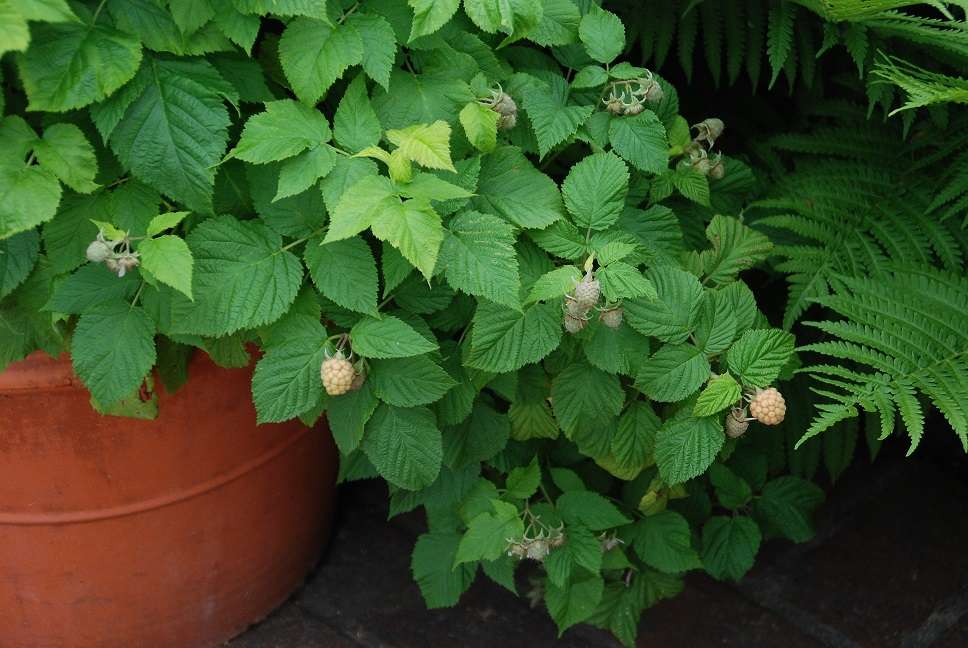
Compact varieties of raspberries and other fruit are well suited to being grown in containers and small spaces.
Photo courtesy of MelindaMyers.com
 by Melinda Myers
by Melinda Myers
Have fun and enjoy picking fresh fruit right outside your door thanks to compact varieties you can grow in containers. Just clear some space on your patio, deck, balcony, or front steps that receives at least six hours of sunlight and get busy planting.
Consider starting with strawberries. They provide seasonal interest with their white flowers, red berries, and brilliant fall color. Day-neutral and everbearing strawberries produce fruit throughout the summer and grow well in strawberry pots, containers, and hanging baskets. Place the containers where you can enjoy their beauty and easily harvest and enjoy a few berries on your cereal, as an afternoon snack, or atop your favorite dessert.
Include a few of the relatively new compact berry bushes suited to containers and small spaces. Raspberry Shortcakeâ grows two to three feet tall and wide and is thornless which makes harvesting a breeze. They produce a bumper crop on new plant growth each season.
Baby Cakesâ blackberry is another thornless space-saving berry plant. Like Raspberry Shortcakeâ it grows two to three feet tall and wide and is thornless. The white flowers and tasty fruit that form on old growth make Baby Cakesâ a nice addition to any outdoor space.
Grow compact blueberries in pots adding pretty flowers, edible fruit, and great fall color to your patio, deck, or balcony. Blueberries prefer moist, well-drained acidic soil that many of us do not have in our gardens but can provide these ideal conditions when growing in containers. You only need one plant to have fruit but growing two will more than double the harvest.
Use narrow and columnar dwarf apples as a living screen or vertical accent. The Urban Appleâ series, Spireâ apples, North PoleÔ, and Sentinel varieties are all suited to growing in containers and small spaces. The trees grow about eight to ten feet tall and only several feet wide. The trunk is loaded with short branches and lots of fruiting spurs for easy harvesting. You will need two different varieties of most apples, including these, for cross-pollination to occur and fruit to develop.
Grow your compact berry bushes in pots 12 to 16 inches in diameter and at least ten inches deep. As the plants grow and mature, move them into larger, 20 to 24″ containers. Your columnar apples will appreciate a bigger container that is 20 inches wide and deep.
Use pots with drainage holes and fill them with a quality potting mix. Check soil moisture daily and water thoroughly whenever the top few inches of soil are starting to dry. Reduce ongoing maintenance by incorporating an organic moisture-retaining product like Wild Valley Farms wool pellets (wildvalleyfarms.com) into the potting mix. This sustainable product reduces watering by up to 25% and increases air space for healthier growth.
Supplement the nutrients in Wild Valley Farms wool pellets as needed with a low nitrogen, slow-release fertilizer and eliminate weekly fertilization. Add the slow-release fertilizer soon after planting and again mid-season if needed. Do not fertilize in late summer as that can stimulate late-season growth that can be damaged in winter.
Those gardening in cold climates will need to provide extra winter protection. Insulate the roots by grouping plants together and surrounding them with bales of straw, bags of potting mix, or similar materials. Or move plants to an unheated garage for winter and water whenever the soil is thawed and dry.
Another option is to grow these plants in nursery pots and set them in decorative containers for summer. When winter arrives, move the potted plants out of the decorative containers and sink the nursery pots in a vacant part of the garden. Lift the plants out of the ground in spring and set them back in their decorative containers for the growing season.
As you master these fruit plants, and if space allows, expand your small-scale orchard to include citrus, figs, dwarf cherries, plums, and peaches. You’ll enjoy the flowers, shade and of course the tasty fruit.
Melinda Myers has written more than 20 gardening books, including the recently released Midwest Gardener’s Handbook, 2nd Edition and Small Space Gardening. She hosts The Great Courses “How to Grow Anything” instant video and DVD series and the nationally syndicated Melinda’s Garden Moment radio program. Myers is a columnist and contributing editor for Birds & Blooms magazine and was commissioned by Wild Valley Farms for her expertise to write this article. Myers’ website is www.MelindaMyers.com.
SCORES & OUTDOORS: Need a thermometer? Try the snowy tree cricket
/0 Comments/in Scores & Outdoors/by Roland D. Hallee by Roland D. Hallee
by Roland D. Hallee
Over the last 50 years or so of my adult life, I have been involved in many activities, including coaching sports at the youth and high school levels, and have done my share of local political participation. So, in exposing myself to critics, I have been called some unflattering names. Some more colorful than others. But, one thing of which I have never been accused is being a nerd.
So, with that, I must make a confession. Although skeptical at first, I have become a follower of the now defunct TV sitcom, The Big Bang Theory. That group of nerds deals solely in science, and very rarely on practicality. My original evaluation of the show was that no one could be that nerdy. So, in one recent rerun episode, Sheldon, the “top” nerd of the group, talked about the Snowy Tree Cricket.
That was a good one. Who made up that name? It sounds contrary to anything about crickets I know. Well, I looked it up, and sure enough, it actually exists.
This is what I found. The snowy tree cricket, Oecanthus fultoni, also known as the thermometer cricket, is a species of tree cricket from North America. It feeds on leaves but also damages fruit. The chirp of this species is often dubbed onto sound tracks of films and television shows to depict a quiet summer’s night, or ridicule from an audience attending a comic’s show when they don’t think the joke was funny. The rate of chirp varies depending on the heat of the environment, allowing a listener to estimate the temperature.
The cricket’s common name of the thermometer cricket is derived from a relationship between the rate of its chirps and the temperature. An estimate of the temperature in Fahrenheit can be made by adding 40 to the number of chirps made in 15 seconds. Before 1960, the name Oecanthus niveus was wrongly applied to this species. Oecanthus fultoni was named in honor of Bentley Ball Fulton (1880 – 1960), an American entomologist who laid the principal groundwork on North American cricket classification.
Of course, if you are really interested in using the snowy tree cricket as a thermometer, you should calibrate your local crickets against a thermometer placed near where they sing. Count their chirps per minute at a variety of temperatures, graph the results, draw a line that fits the points, and use a little algebra to arrive at a handy formula.
The species is about a half inch long and is light green with translucent light green wings. It has black marks on the first and second antennal segments, that are either round or oval shaped, and is about half the length of a segment. The antennae are longer than its body and it has a small head. The eggs are pale yellow and shaped like a kidney. Its nymphs are pale and slender with wings that are not completely developed. The nymphs develop wings slowly. It has one generation per year.
American novelist Nathaniel Hawthorne said of the species’ chirps, “If moonlight could be heard, it would sound just like that.”
The species can be found throughout the United States except the southeastern part of the country. In Maine, they are predominantly in York and Cumberland counties. It is located in shrubs, vines, fruit trees, broad-leaved trees, and oaks. The cricket can rarely be found in grass. Adults of the species can be found from mid-July to mid-November. The cricket can sometimes be so high in oak trees that its chirp is the only way to identify it.
Both nymphs and adults feed on leaves and their feeding causes barely any damage. The cricket is known to destroy apples, plums, peaches, and cherries. The female drills a hole into a twig’s cambium in which to lay its egg. It then makes a row of punctures on one side of the hole and seals it with either excrement or chewed plant tissue once the egg is placed. Adults of the species eat holes in ripe fruits which results in the fruit rotting. It normally does not cause any damage in orchards that are consistently sprayed.
There is yet more to know about the song of the snowy tree cricket. Although Sheldon talked about it, the cricket never did make an appearance.
Not quite the whole show
Well, I caved in. At first showing no interest in the solar eclipse that occurred on April 8, a colleague came into the office with some extra pairs of viewing glasses. My curiosity took over.
I sat outside for approximately 25 minutes, and from my vantage point in China, I witnessed what I would classify as a 98.5 percent eclipse. In that 25 minutes, it never came to totality.
Oh well, there’s always 2044.
Roland’s trivia question of the week:
In how many Stanley Cup finals did Boston Bruins’ defenseman Bobby Orr play?
Give Us Your Best Shot! for Thursday, April 11, 2024
/0 Comments/in Give Us Your Best Shot!/by Website EditorTo submit a photo for this section, please visit our contact page or email us at townline@townline.org!
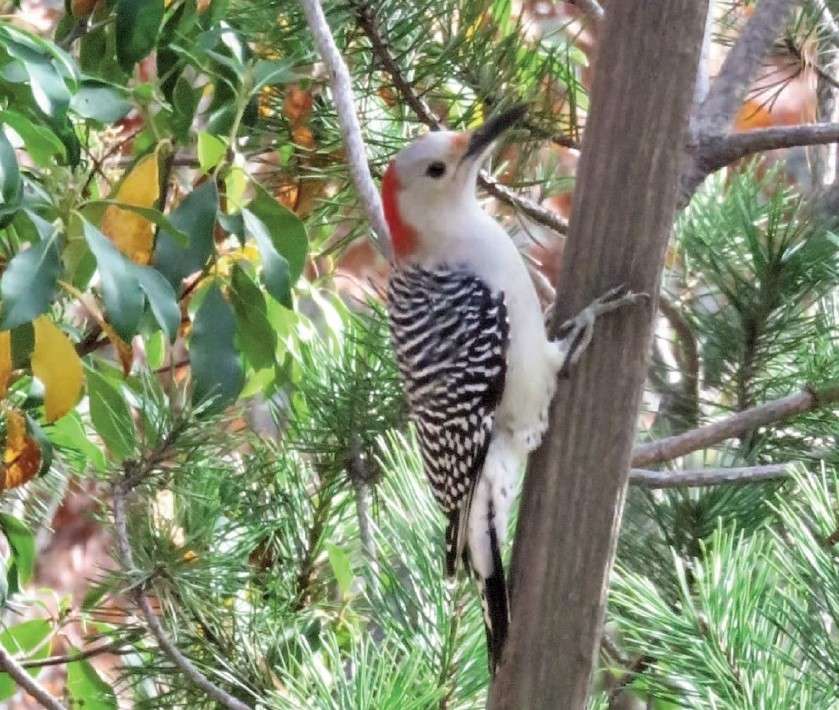
FINDING THE SOFT SPOT: Pat Clark, of Palermo, photographed this red-bellied woodpecker in her yard last summer.
FOR YOUR HEALTH: What You Need To Know About Keratoconus and the iLink Procedure
/0 Comments/in For Your Health/by Website Editor (NAPSI)—There could be good news if you or someone you care about is ever among the one in 6,000 Americans the National Institutes of Health estimates will be diagnosed with keratoconus (KC).
(NAPSI)—There could be good news if you or someone you care about is ever among the one in 6,000 Americans the National Institutes of Health estimates will be diagnosed with keratoconus (KC).
The Problem
This is a sight-threatening and progressive eye disease that occurs when the cornea thins and weakens over time. It causes the development of a cone-like bulge, which can dramatically and permanently distort vision.
An Answer
There is no cure for keratoconus, but the cornea can be strengthened to slow or halt the progression of the disease with an FDA-approved cross-linking procedure called iLink®. Once diagnosed, there is a lot of information for patients to digest and for eye doctors and their staff to explain in a way that is thorough, educational, and not overwhelming.
Helping Patients Understand the Procedure
With that goal in mind, Glaukos, the company that developed the iLink procedure, launched a 10-part video series called WiseEyes, available on the Glaukos Cornea patient YouTube channel. The format of each short video depicts two young “podcast hosts” talking about everything from keratoconus signs and symptoms and the risk of vision deterioration to what to expect before, during, and after the iLink procedure. Episodes also address insurance coverage, financing options, and financial assistance programs for the procedure. The goal of the WiseEyes video series is to help patients get the information they need so they can feel comfortable and confident in making decisions as they relate to their keratoconus journey and treatment with iLink.
Glaukos is committed to consumer awareness. Last year, the company launched a massive KC awareness initiative through a unique website called www.livingwithkeratoconus.com that offers details about KC signs and symptoms; an online, downloadable five-question quiz; and a link to “Find a Doc” to make an appointment to be screened. The campaign was supported by videos, social media, collateral materials, and media relations in partnership with eye doctors to encourage people – primarily between the ages of 14 and 35 – to be screened for KC. Both campaigns, designed to educate people about KC, are based on the fact the disease is commonly underdiagnosed but can progress rapidly and result in significant vision loss. If left untreated, as many as one in five patients with progressive KC may eventually need a corneal transplant.
More good news is that people are starting to talk about KC and better understand the signs and symptoms that should be discussed with an eye doctor. This has come through Glaukos’ efforts and patients with KC sharing their experiences on social media channels.
“Corneal cross-linking is an effective treatment for stabilizing cornea rigidity to preserve vision and spare patients with KC from possibly having to undergo cornea transplantation,” said Dr. Clark Chang, an optometrist at Wills Eye Hospital in Philadelphia. “The WiseEyes campaign was created with diagnosed KC patients in mind to provide a clear understanding of what to expect from the FDA-approved treatment and to allay any fears.”
Learn More
For more facts, visit www.glaukos-iLink.com.
REVIEW POTPOURRI: Sarah Orne Jewett
/0 Comments/in Review Potpourri/by Peter Cates by Peter Cates
by Peter Cates
Sarah Orne Jewett
The October 1904, Atlantic Monthly, out of Boston, Massachusetts, had an article, The Art of Miss Jewett, on South Berwick Maine’s own Sarah Orne Jewett (1849 – 1909) , via which Charles Miner Thompson (1864-1941) stated the following:
“…I always think of her as of one who, hearing New England accused of being a bleak land without beauty, passes confidently over the snow, and by the gray rock, and past the dark fir tree, to a southern bank, and there, brushing away the decayed leaves, triumphantly shows to the faultfinder a spray of the trailing arbutus. And I should like, for my own part, to add this: that the fragrant, retiring, exquisite flower, which I think she would say is the symbol of New England virtue, is the symbol also of her own modest and delightful art.”
Thompson’s statement might be encrusted by a bit too much purple scrub brush prose but he did show a discerning appreciation of a writer for her gifts at endowing the “bleak land…gray rock…[and] decayed leaves ” of our Pine Tree State and conveying its own special beauties and truths in this at times very scary universe.
As with William Faulkner’s hot dusty roads in Mississippi and Willa Cather’s Nebraska wheat fields, Jewett’s Southern Maine was transformed into a microcosm that resonated with so many readers.
In her short story collection The Country of the Pointed Firs, one story in particular, The Flight of Betsey Lane, has an opening paragraph that conveys in its simple narrative just how much Miss Jewett absorbed into her “little piece of dirt” in Southern Maine (She lived in South Berwick most of her life and, as a child, traveled with her father on his rounds as a country doctor.); since it’s too long to quote in its entirety, I offer a few sentences that hopefully will convey the spirit of the author :
“One windy morning in May, three old women sat together near an open window in the shed chamber of Byfleet Poor-house. The wind was from the northwest, but their window faced the southeast, and they were only visited by an occasional waft of fresh air.
“There was a cheerful feeling of activity, and even an air of comfort, about the Byfleet Poor-house. Almost every one was possessed of a most interesting past, though there was less to be said about the future.
“There was a sharp-faced, hard-worked young widow with seven children, who was an exception to the general level of society, because she deplored the change in her fortunes. The older women regarded her with suspicion, and were apt to talk about her in moments like this, when they happened to sit together at their work.”
Faulkner wrote, “A writer needs three things – experience, observation and imagination, any one or two of which can supply the lack of the others.”
Willa Cather, who was a friend, wrote of Sarah Orne Jewett, “She early learned to love her country for what it was. What is quite as important, she saw it as it was. She happened to have the right nature, the right temperament, to see it so- and to understand by intuition the deeper meaning of all she saw.”
Edvard Grieg
An RCA Victor cassette contains Edvard Grieg’s a minor Piano Concerto and two of his solo Lyric Pieces; and the Concerto of Robert Schumann, also in a minor, as performed by Artur Rubinstein, with Alfred Wallenstein conducting a studio pickup orchestra for the Grieg and Carlo Maria Giulini directing the Chicago Symphony in the Schumann.
Rubinstein played with his wondrously expressive musicianship that he brought to a wide range of composers from Mozart and Beethoven to Tchaikovsky and Rachmaninoff and they can be heard via YouTube. He could at odd moments smother the music with his personalized individuality but in general he conveyed the spirit of each composer in his many recordings.
.



